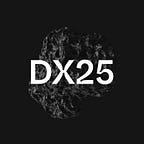How DX25’s Advanced Liquidity Features Allow Simpler, Decentralized Fund Management
Over the past few years, DeFi’s ‘concentrated liquidity market maker’ (CLMM) model has driven away amateur market makers. One of the main design goals of DX25 is to make DeFi simple and usable. This article will show how DeFi has become increasingly complex over time and how DX25 utilizes automated fund managers to simplify market making.
DeFi and complexity: From AMM to CLMM
DeFi was originally designed to be open and decentralized. Anyone could become a market maker by locking up their tokens. Protocols like Uniswap introduced the x*y=k model, which allowed users to earn yield by locking up tokens in a liquidity pool. This system provided a good starting point. However, it wasn’t very profitable since all liquidity provided got distributed over a wide price range.
To counter this problem, DeFi started adopting the CLMM model which allows LPs to concentrate their liquidity within a specific price range. This generates a healthier ROI. However, there is a trade-off. CLMM is significantly more complex and requires active management.
How complex is CLMM?
One of the biggest reasons why the “x*y=k” model was so popular because it was specifically built for passive LPing. However, CLMM requires LPs to take care of redundant yet important actions, such as:
- Choosing the pool.
- Specifying the width of the price range.
- Continually maintaining liquidity ranges to ensure their offering includes the current swap rate.
Before we go any further, let’s clarify one thing.
The CLMM model was necessary for DeFi to evolve. However, the complexities it brought in have driven away non-professional market makers.
So, what’s the solution here? For that, let’s look into a concept called “fund management.”
What is Fund Management?
Fund management, also known as asset management, is a system that maintains the value of an entity. It involves operating, deploying, maintaining, disposing, and upgrading assets in the most cost-efficient and profit-yielding way possible.
A fund manager must pay close attention to cost and risk to capitalize on cash flow opportunities. Ensuring the proper liquidity of funds is a crucial aspect of the fund manager’s position. In finance, “fund management” refers to people and institutions that manage investments on behalf of investors.
Key Tasks of a Fund Manager
These are the main responsibilities of a fund manager.
Market Research
A fund manager is responsible for continually studying market situations and making the best moves possible to create maximum profits. As such, instead of spending hours scouring through countless research, delegate the heavy lifting to a fund manager. The fund manager examines shifts in the market, analyzes the competition, and more.
Choosing The Right Investments
A fund manager conducts market research to select the best stocks, bonds, or other financial instruments. They make this decision based on the fund’s stated objective, investors’ expectations, and applicable laws. If securities do not belong in a fund’s portfolio, they sell them and invest in new ones if needed.
Track Performance
Fund managers regularly monitor a fund’s growth and performance. They must guarantee high performance and ROI by buying/selling securities to match fund objectives. They may also take justifiable risks to deliver results.
Protect Client Interest
Market risks are unavoidable. However, a fund manager is responsible for safeguarding their client’s interests and wealth as much as possible. Risk can be handled with portfolio diversification, risk assessments, changing various assets, etc.
DX25: Bringing Fund Management To DeFi
How do you get a fund manager in DeFi? Remember, one of the core principles of DeFi is to remove intermediaries from the equation. However, by its very definition, a fund manager is an intermediary.
DX25 uses a liquidity management pool as an automated, smart contract-based fund manager for its users. The liquidity management pool takes care of necessary yet redundant tasks like:
- Choosing the token pairs where the traded tokens will be submitted.
- Selecting the price ranges for their orders.
- The fees that should be applied for their position
The liquidity management pool significantly reduces the overhead for non-professional investors and allows them to participate in the DeFi market. In the future, members of the DX25 community will be incentivized to create simple algorithms and heuristics to help improve the liquidity management pool. They can sell their solutions to other users in a secondary marketplace.
In Closing
One of the design goals of DX25 was to provide a solution with reduced operational complexity for non-professional investors. We believe that by integrating a “funds management layer,” we will be able to make the DeFi market making democratic again.
